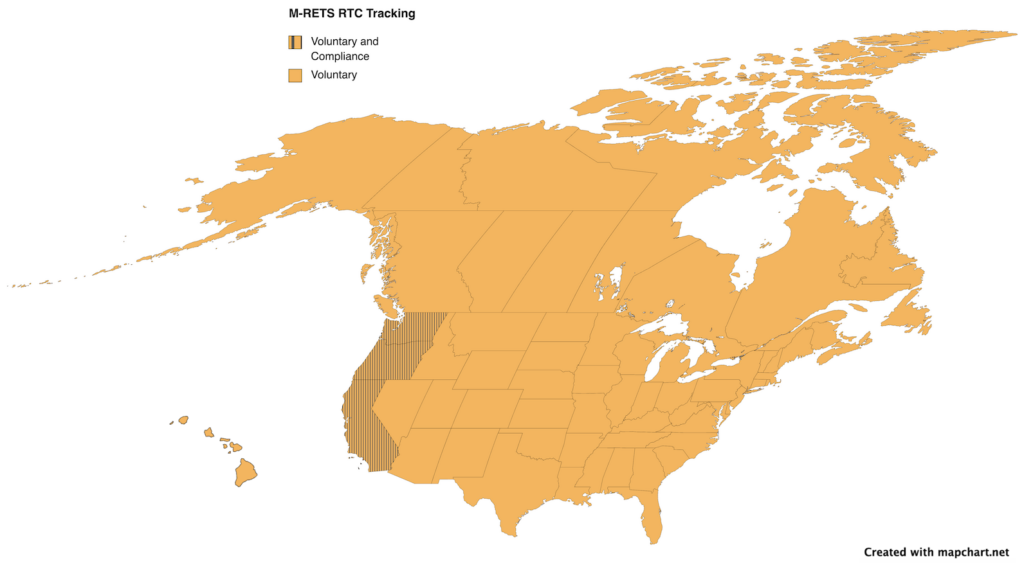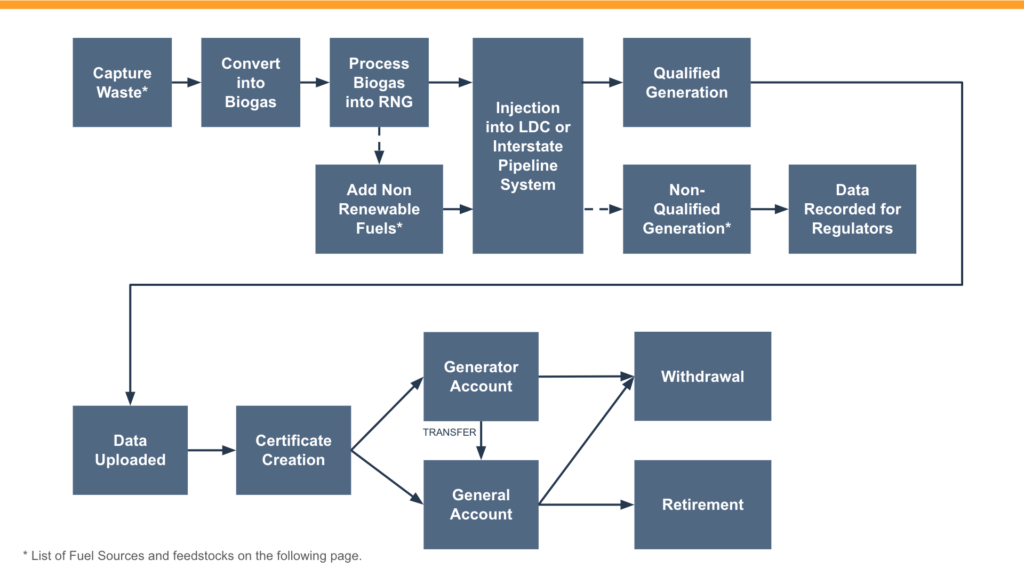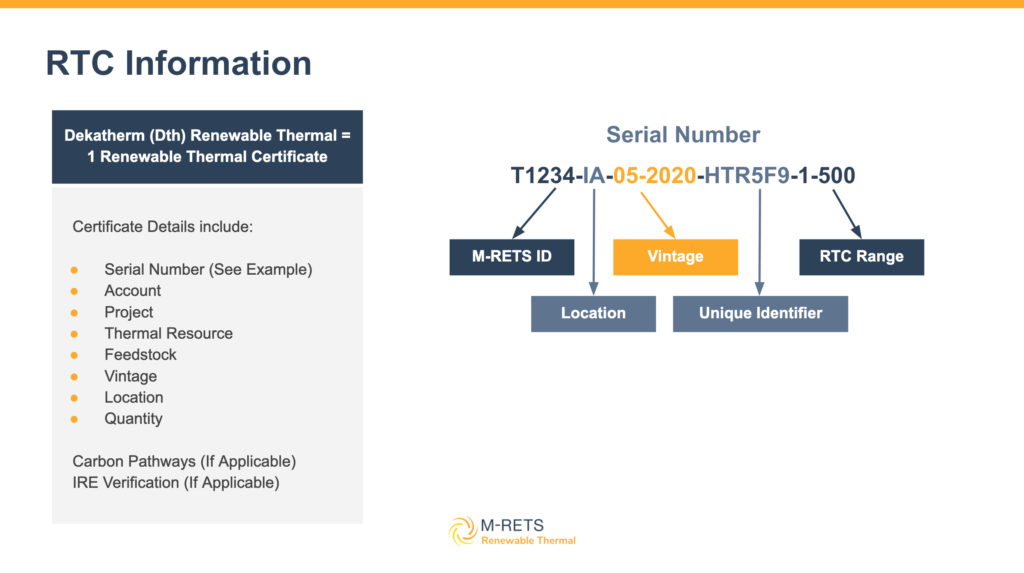Why Renewable Thermal?
Given the recently launched modern and flexible M-RETS platform, M-RETS saw the opportunity to address the need for a Renewable Thermal tracking platform that could help grow the market and provide regulatory bodies with proper oversight. There are many similarities between tracking RECs and RTCs using a web-based platform. Since CenterPoint filed their tariff, other natural gas utilities including SoCal Gas have filed or announced RNG tariffs. To meet this demand, M-RETS launched a beta version of the Renewable Thermal platform in July 2019 with the full platform launching January 1, 2020. M-RETS approved the first renewable thermal generator in December 2019, prior to the public launch of the platform.
M-RETS goal in building an online platform is to increase market transparency, bring an increased level of integrity over paper attestations, and provide the value and liquidity necessary to support renewable thermal projects. The platform supports the use of scientifically validated carbon intensity pathways, such as the Argonne National Labs GREET model, Canada’s GHGenius model, or the LCFS lifecycle pathway used by the California Air Resources Board. Subscribers may select carbon intensities specific to their claim during the retirement process. The platform also supports eligibilities so states can ensure that only generators approved for their program may be used to support a claim for that specific state program.
Why use a Tracking System?
Streamline certificate management and prevent double counting. Without a certificate market, some projects are not profitable. Renewable thermal markets are currently in a state comparable to nascent REC markets. M-RETS can help build these markets just like early REC tracking systems helped build and sustain emerging renewable electricity markets. Utilizing a dekatherm-based certificate that includes the documentation supporting a full or partial lifecycle carbon pathway allows markets to develop around gross volumes and/or carbon reduction goals. Generators may carry multiple carbon pathways, however, upon certificate retirement, the claiming party must select the appropriate carbon pathway for their end-use.
Provide regulators with an independent, easy to use, and reliable source to verify compliance. A robust certificate market provides a much higher level of integrity over paper attestations. It also provides a more efficient compliance verification process for regulators. It is impractical to verify compliance using spreadsheets or paper attestations, especially when regulated entities work across multiple jurisdictions. This is especially true as voluntary and compliance markets grow. Regulators can utilize M-RETS to prevent double counting and have the option to utilize the Program feature to ensure retirements meet specific requirements set by regulators.
Provide a mechanism to manage holdings, effectuate transactions, and maintain claims. The liquidity a tracking system provides adds to market transparency and allows for a more efficient over the counter or exchange based transactional marketplace. Liquidity is also essential for regulatory markets. A tracking system allows regulated entities to easily sell surplus holdings, reducing ratepayer impact, or allows them to easily acquire certificates to meet a deficit and/or buy when prices are low.
In European markets, participants can make 100% green gas claims as well as claim reduced Scope 1 Emissions (using CDP methodology). It is not clear how—or even whether—the Federal Trade Commission will regulate green gas and other renewable thermal claims. The ability to claim environmental sustainability is a critical driver. A robust certificate market enables certainty and prevents against double-counting that harm legitimate claims. It also gives state regulators the ability to oversee activity and claims made by regulated entities.
Renewable Thermal Certificates (RTCs)
The M-RETS Renewable Thermal Tracking System issues one Renewable Thermal Certificate (RTC) for every dekatherm (Dth) of Renewable Thermal generation. To substantiate renewable energy claims, M-RETS defines a Renewable Thermal Certificate (RTC) as a “whole RTC” and includes all environmental attributes. An RTC can also include optional verified carbon intensity data and track full or partial carbon lifecycles.
M-RETS supports various types of renewable thermal technologies including renewably produced hydrogen, ground source heat pumps, renewable natural gas, sewer/wastewater heat recovery, and many more existing and developing renewable thermal technologies. Like RECs, M-RETS will support state utility commissions and other state energy regulators to implement whatever policy they pass, including what qualifies as an eligible generation technology.
RTC Creation Process
What Does an RTC Look Like?
Why M-RETS?
The value of M-RETS goes far beyond a competitive fee structure, transparency, technology, and financial accountability. M-RETS provides subscribers and regulators unparalleled input into platform operation, governance procedures, and new features directed at enhancing the user experience or to meet the demands of new regulatory and/or industry developments. The innovative platform brings a modern look and feel to the industry, provides subscribers with efficient access to their information, and underlying technical flexibility to support subscribers well into the future.
RTC Tracking Map

More Information
More information on M-RETS and Renewable Thermal can be found here.



